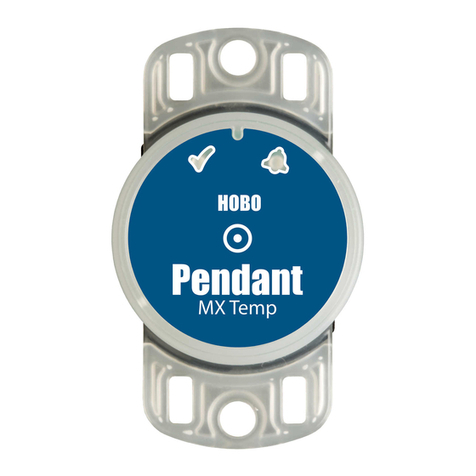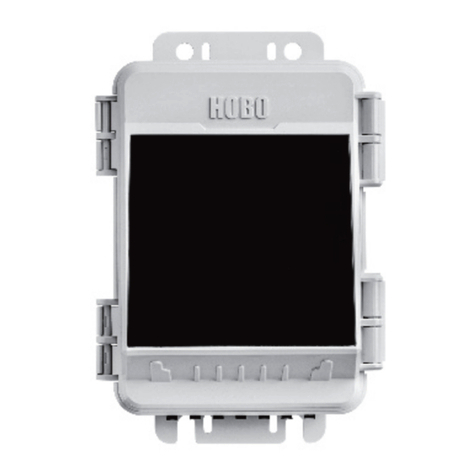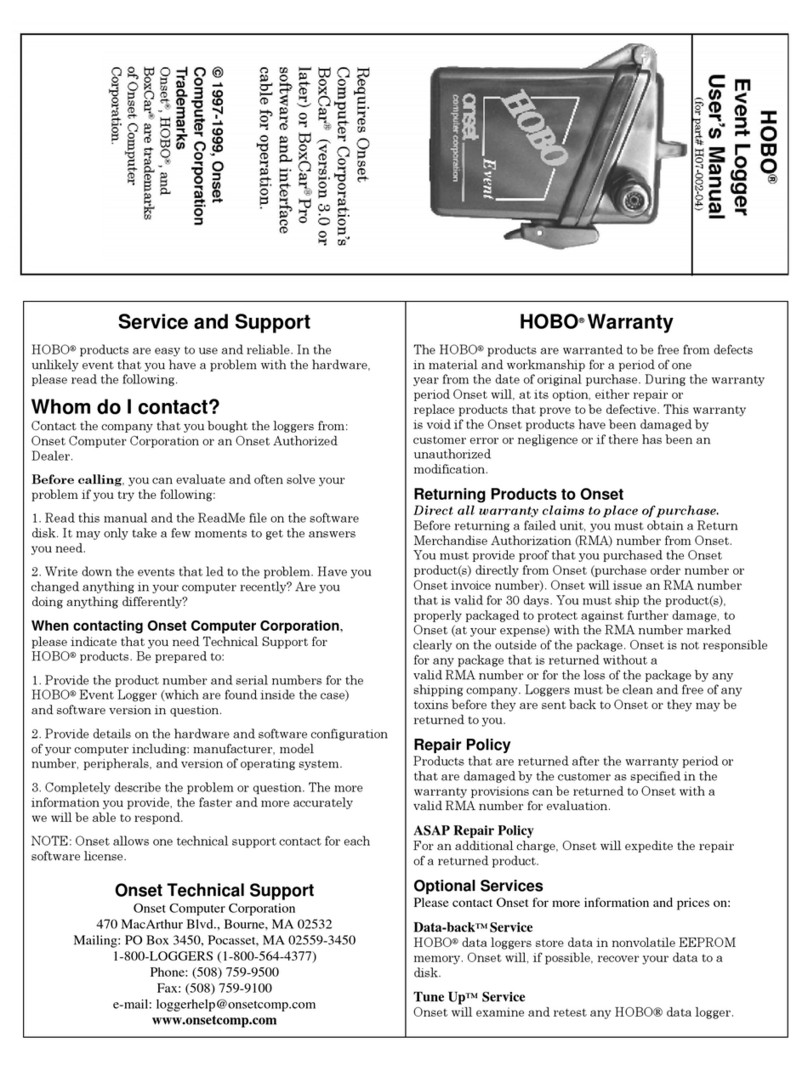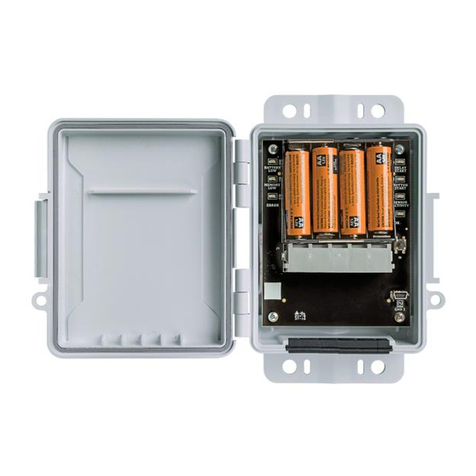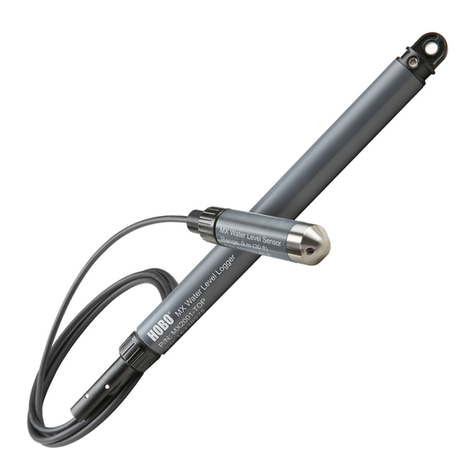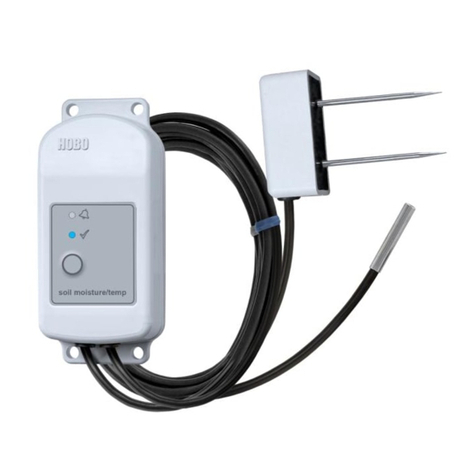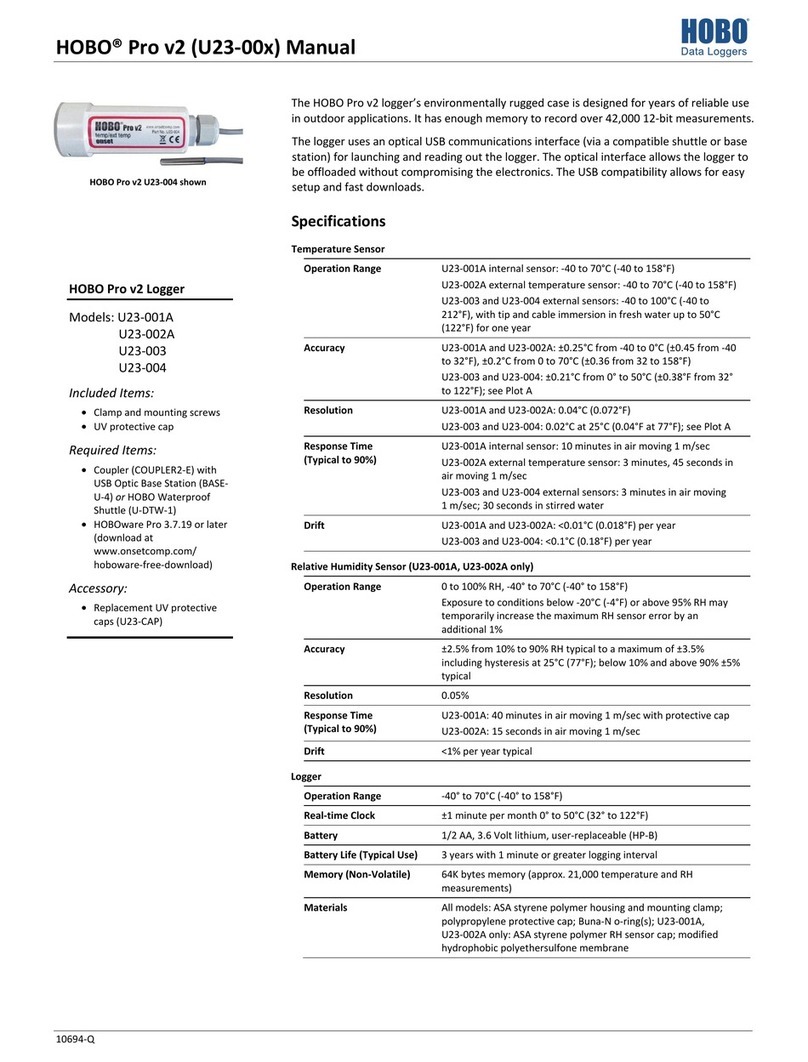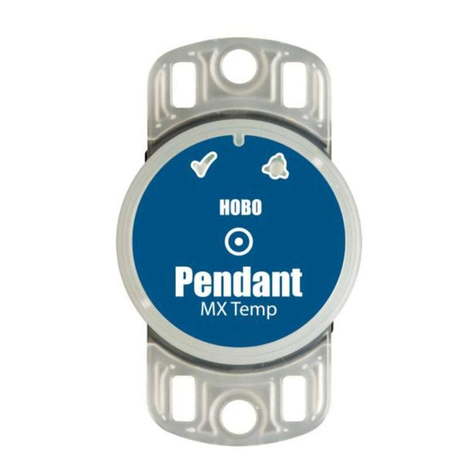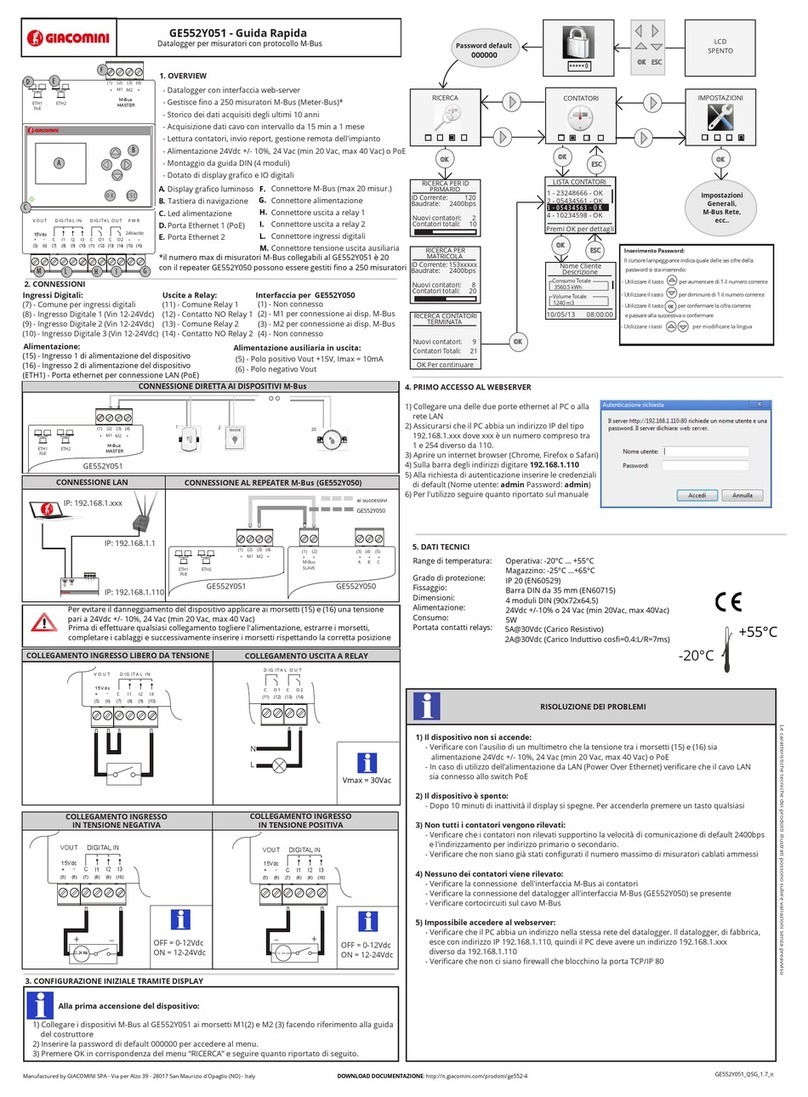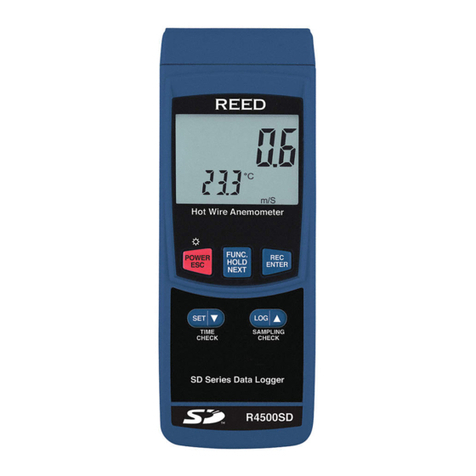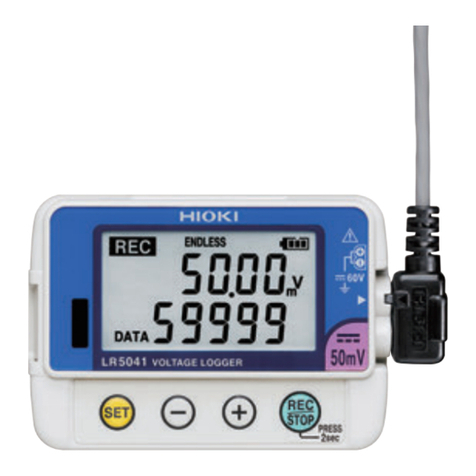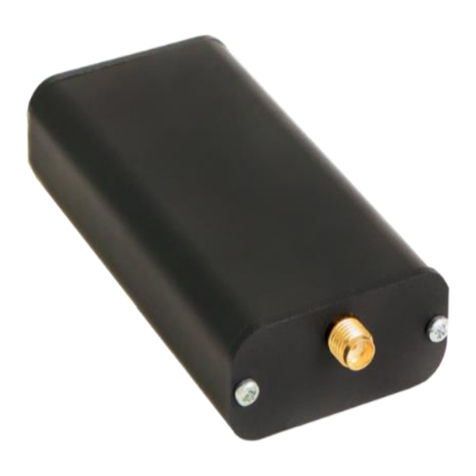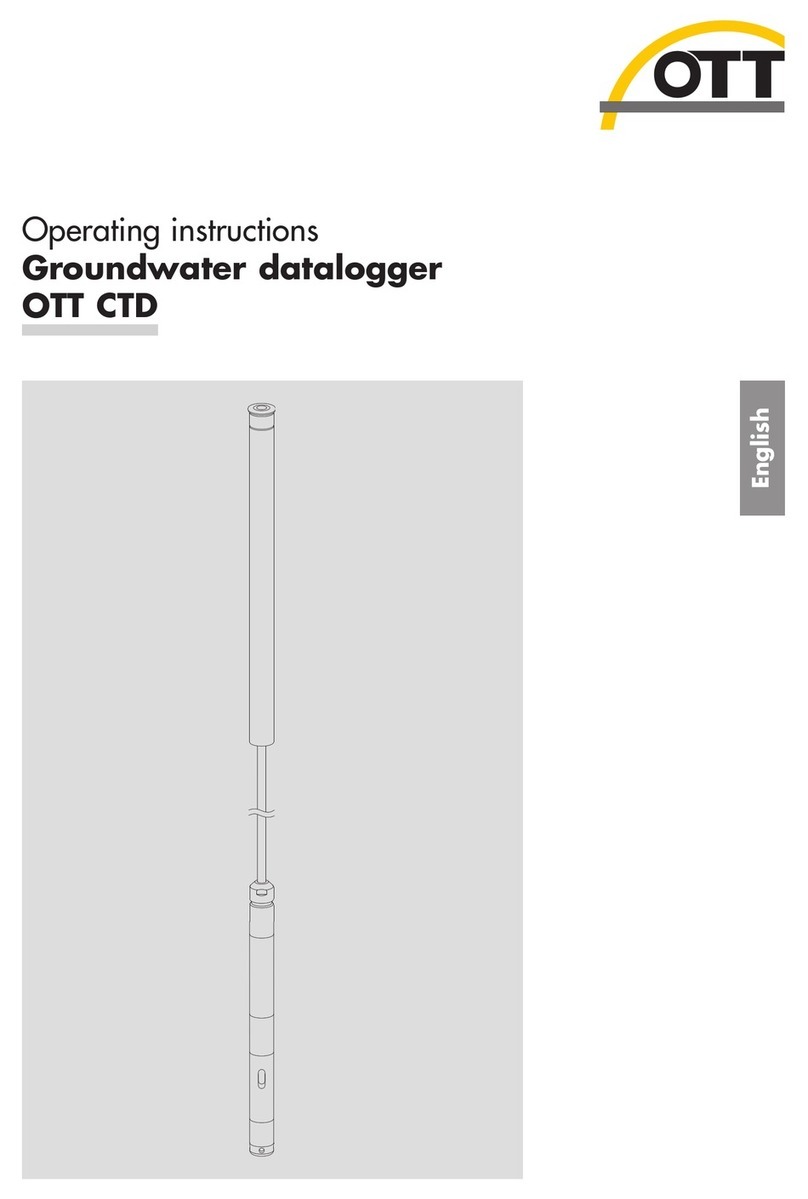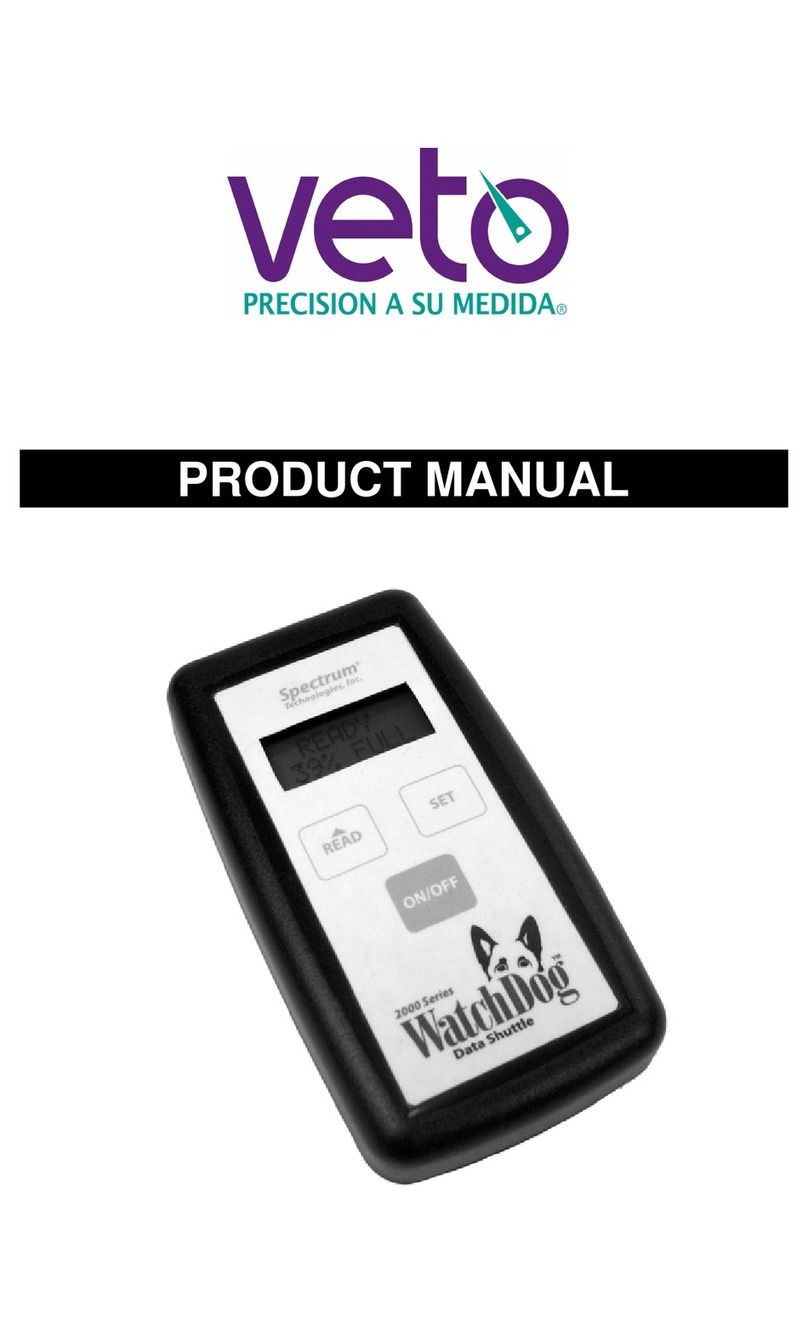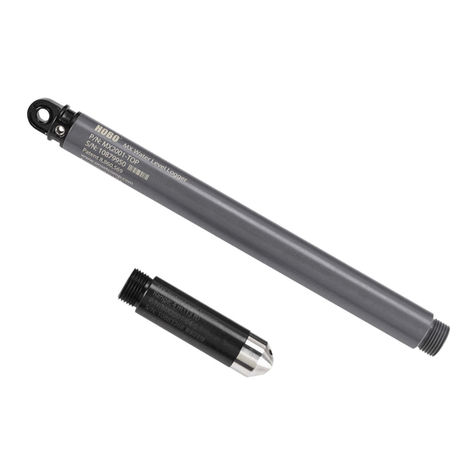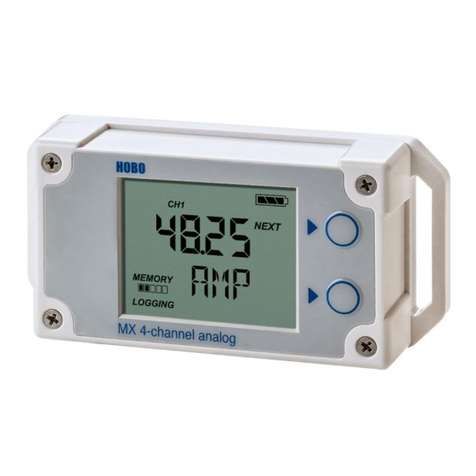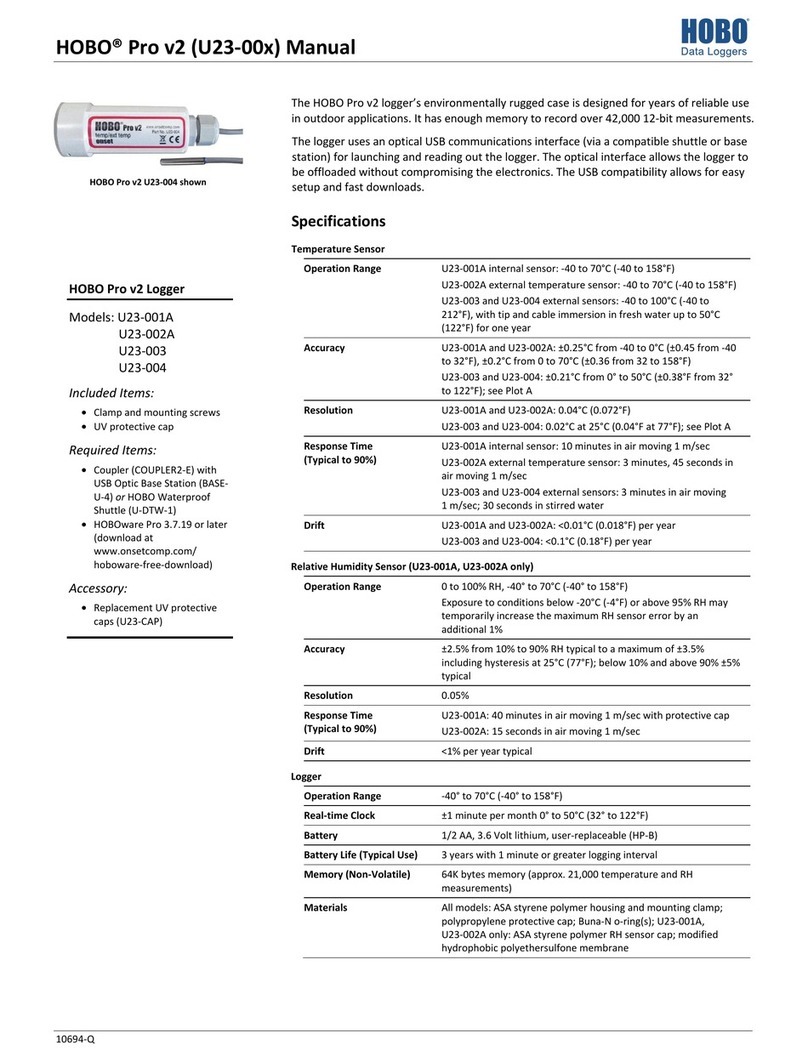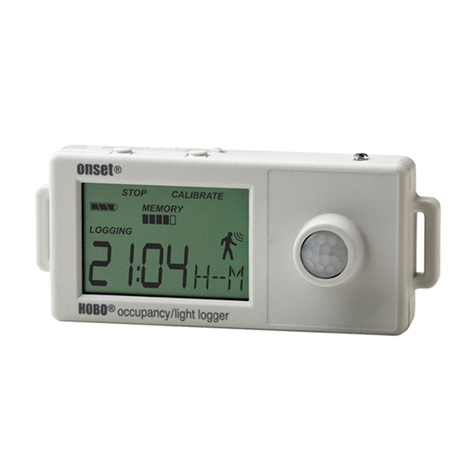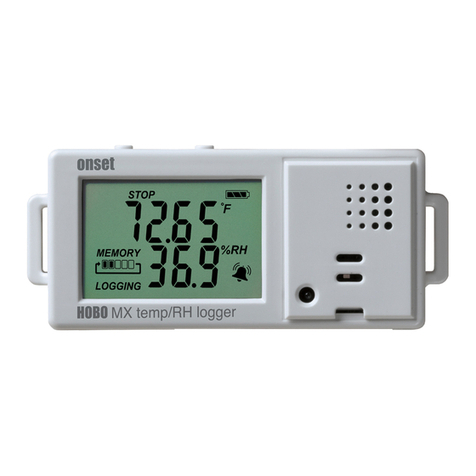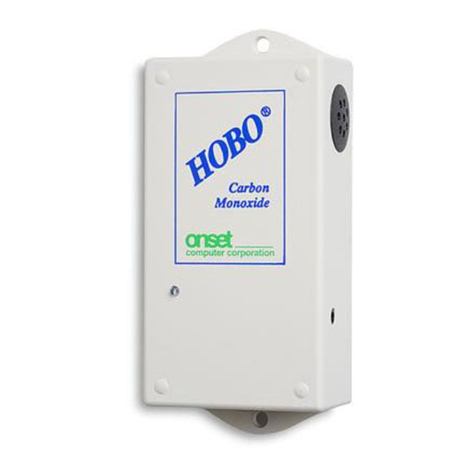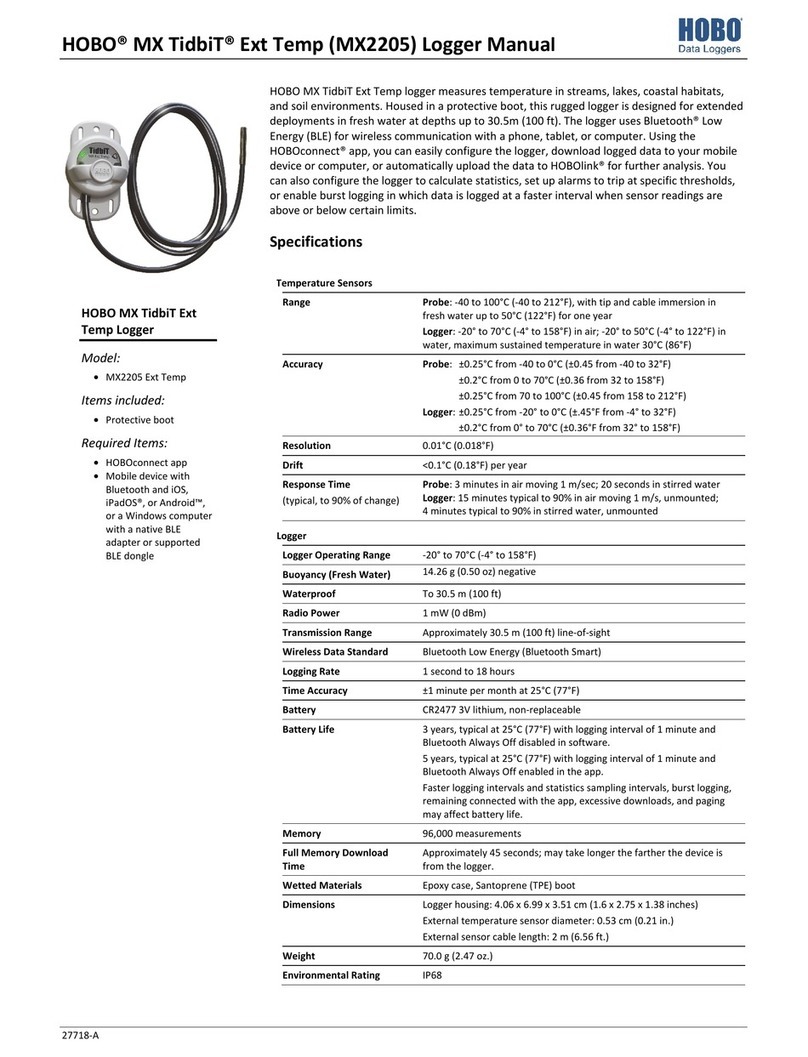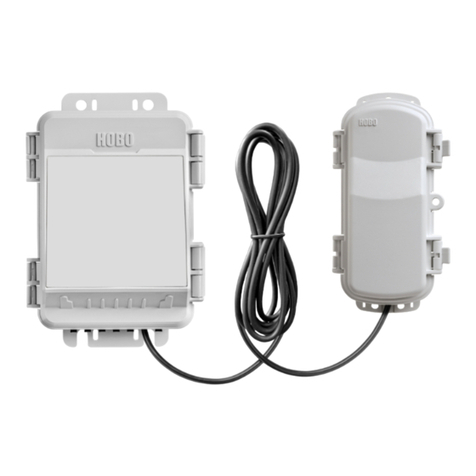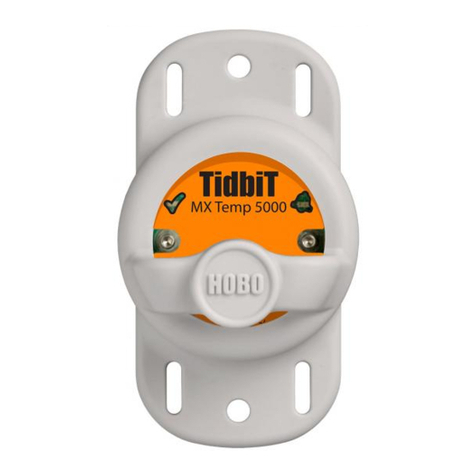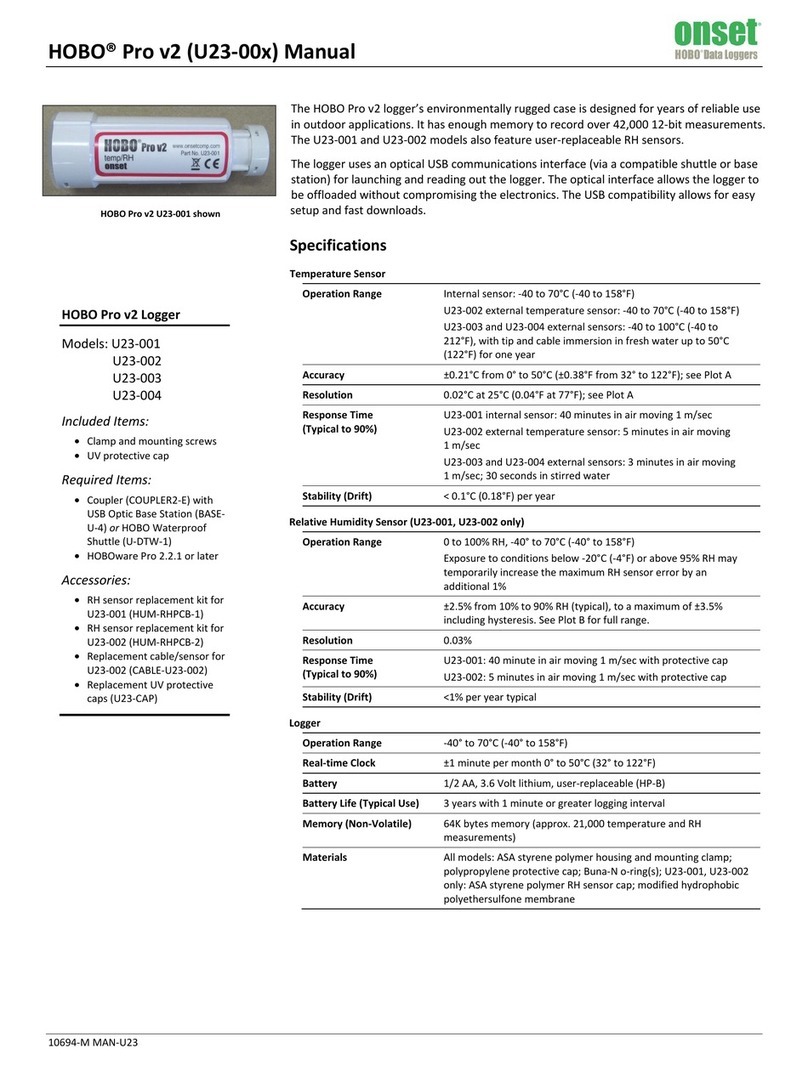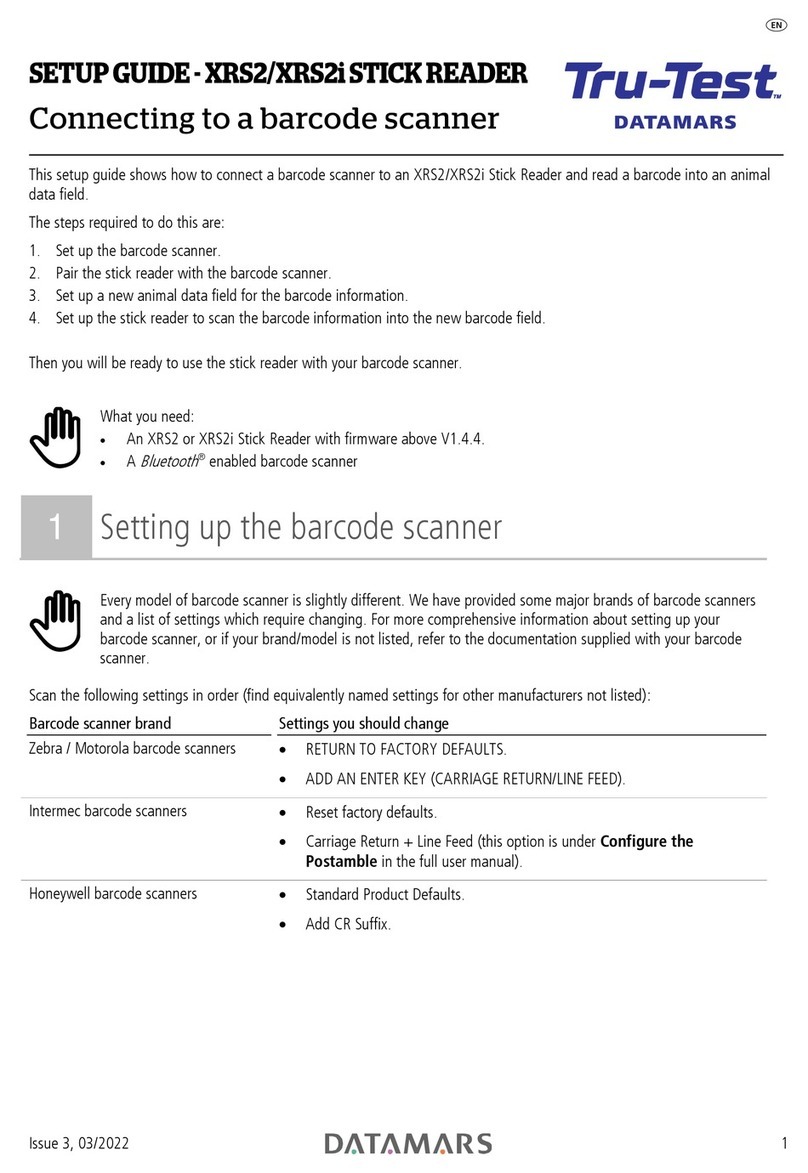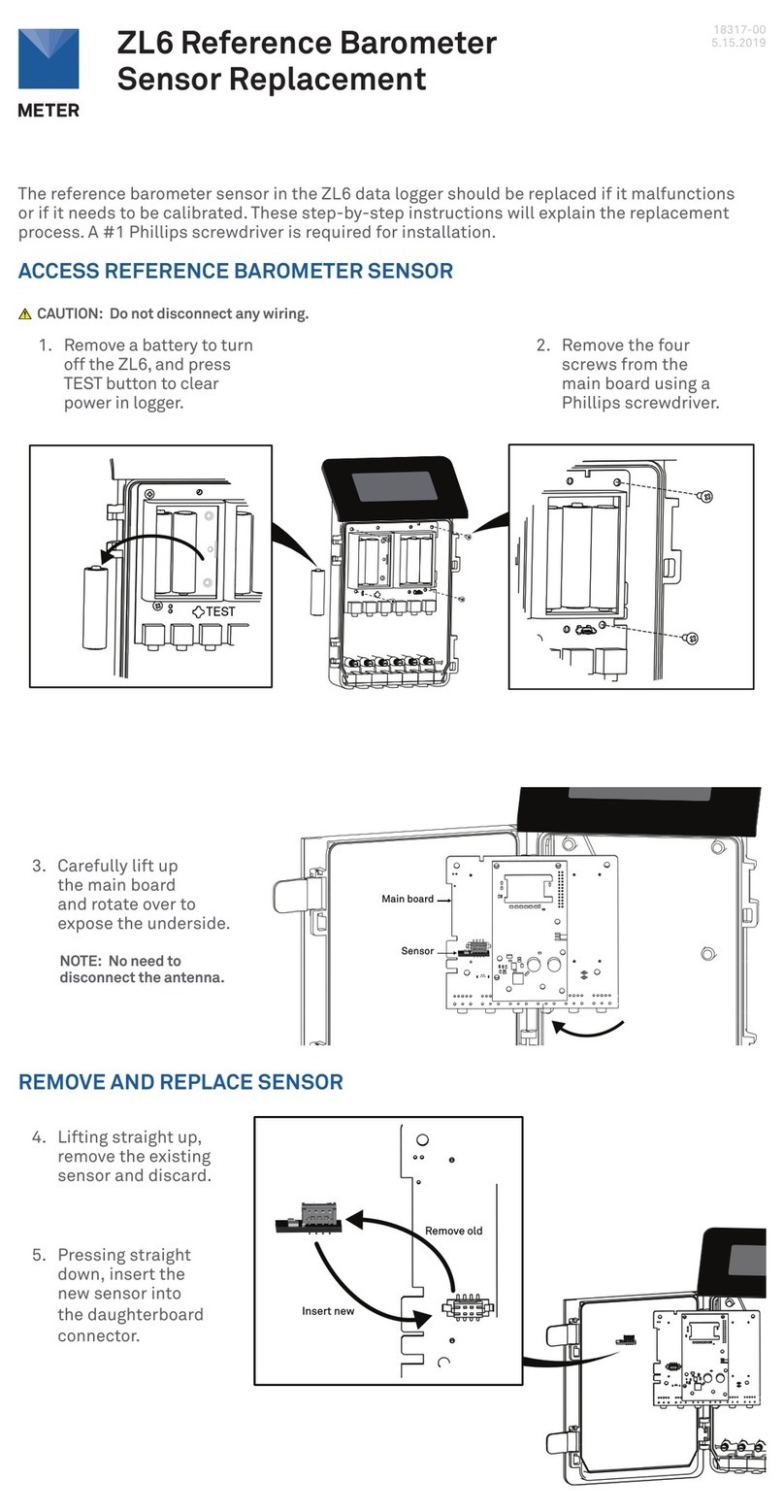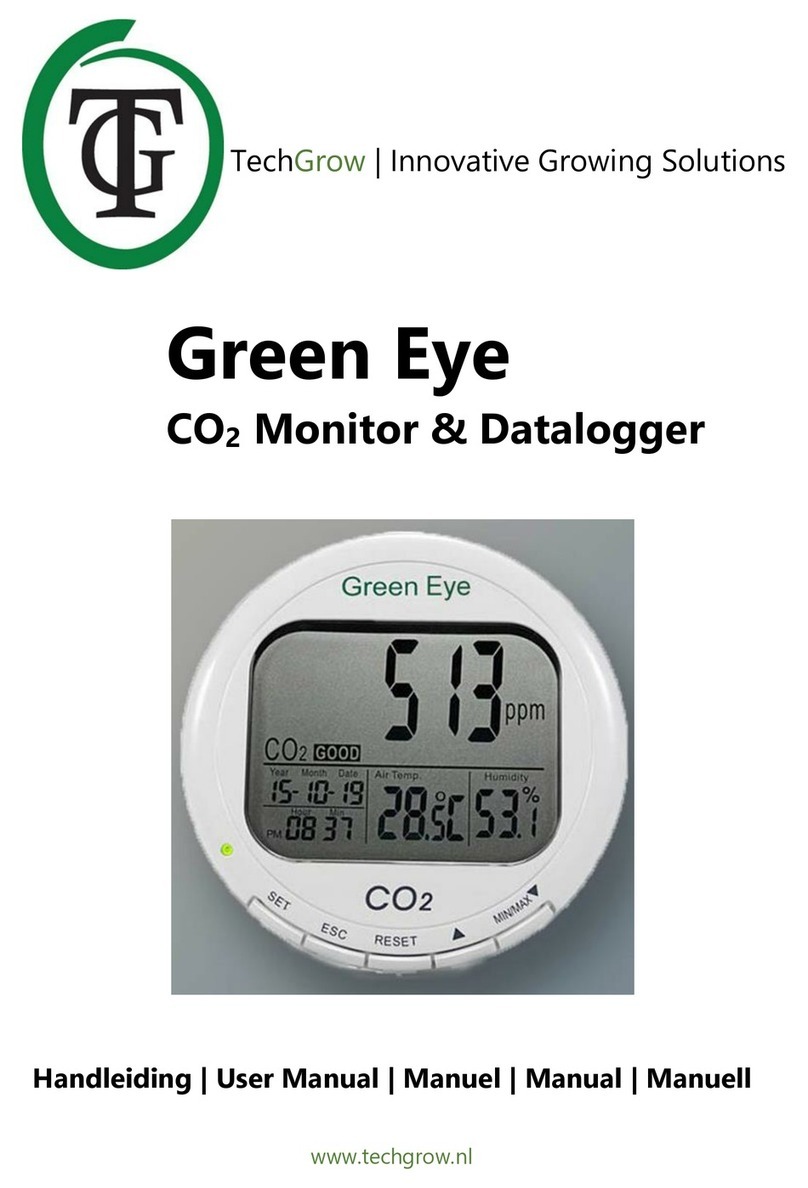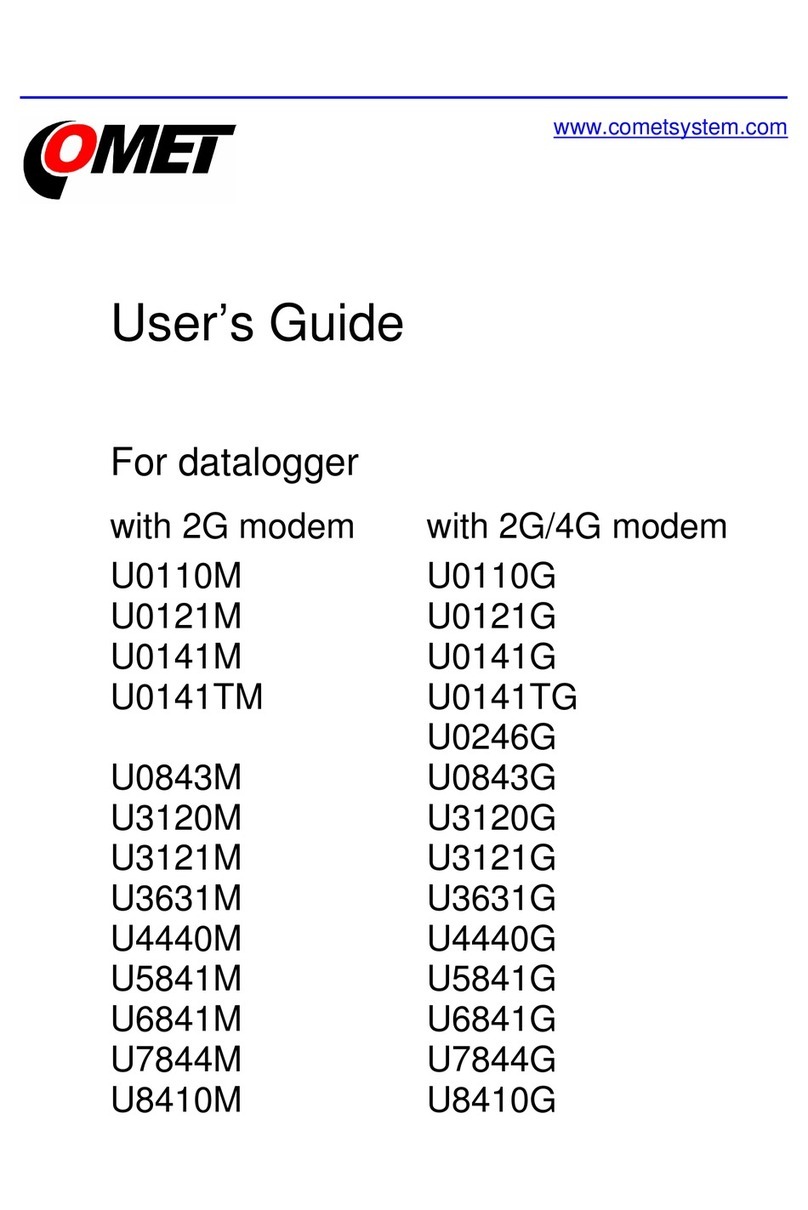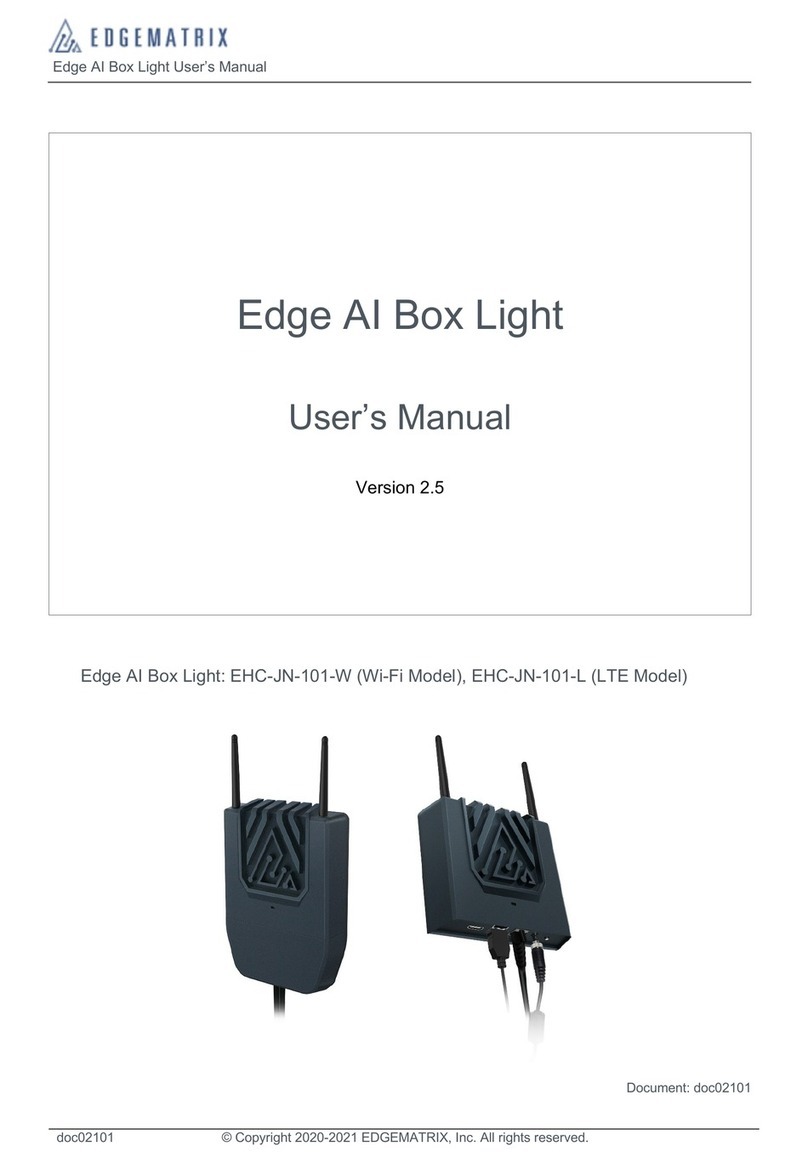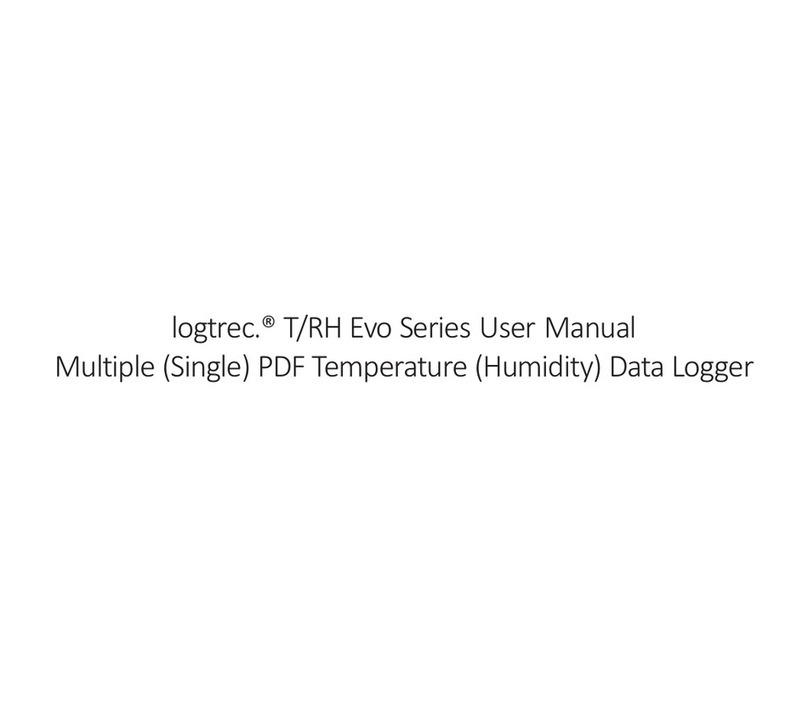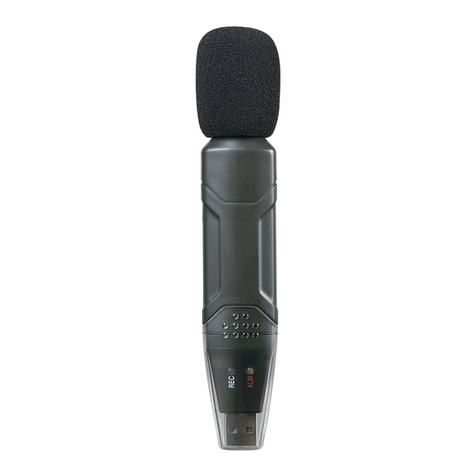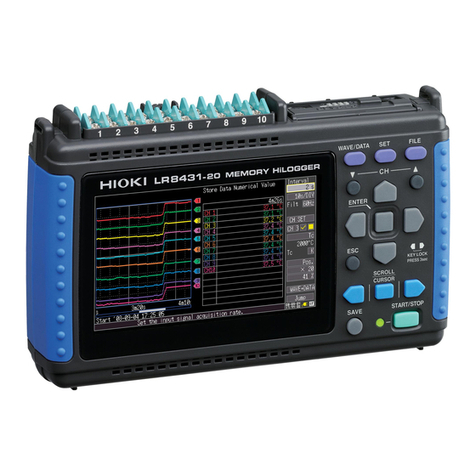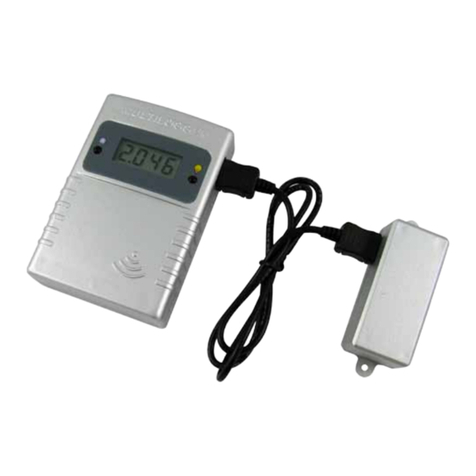
HOBO U12 Temp/RH/Light/External Data Logger
3
Sample and event logging
The logger can record two types of data: samples and events. Samples are the sensor measurements recorded at each logging interval (for example, the
temperature every minute). Events are independent occurrences triggered by a logger activity. Examples of events recorded asynchronously during deployment
include when the logger is connected to the host, when the battery is low, the end of a data file once the logger is stopped, and button pushes.
Press the button on the front of the logger for one second to record an event. Both a button up and down event will be recorded. This is useful if you want to
mark the datafile at a particular point. For example, if the logger is located in an incubator, you might press the button each time the door is opened.
The logger stores 64K of data, and can record up to 43,000 samples and events combined.
Using external sensors
The external input channel has a switched 2.5 V output. This signal can be used to power a sensor directly or it can also be used to trigger an external circuit.
An external sensor should draw no more than 4 mA total when powered. The switched 2.5 V output turns on about 15 ms before the external channel is
measured and stays powered for 48 ms after it is measured, as shown in the following diagram. The striped bar shows the 16 ms period during which the logger
samples the input signal.
Operation
A light (LED) on the side of the logger confirms logger operation.
The following table explains when the logger blinks during logger operation.
When: The light:
The logger is logging Blinks once every one to four seconds (the shorter the logging interval, the faster the light blinks); blinks
when logging a sample
The logger is awaiting a start because it was
launched in Start At Interval, Delayed Start,
or Button Start mode
Blinks once every eight seconds until launch begins
The button on the logger is being pushed for
a Button Start launch
Blinks once every second while pressing the button and then flashes rapidly once you release the button.
The light then reverts to a blinking pattern based on the logging interval
Using the RH sensor
In order to take humidity measurements, the temperature sensor must be used in conjunction with the RH sensor.
Conditions outside the recommended range may offset the RH signal. Vapors may also affect the RH sensor. The diffusion of chemicals into the sensor may
cause a shift in both offset and sensitivity. High levels of pollutants may cause permanent damage to the sensor.
Upon returning to normal conditions, the RH sensor will slowly return towards calibration state by itself. However, prolonged exposure to extreme conditions
may accelerate aging and eventually lead to a permanent shift. To recondition the sensor, do the following:
1. Remove the battery
2. Warm 24 hours 80–90°C (176–194°F) at < 5% RH
3. Re-hydrate 48 hours 20–30°C (70–90°F) at 75–95% RH
Protecting the logger
The logger can be permanently damaged by corrosion if it gets wet. Protect it from condensation. If it gets wet, remove the battery immediately and dry the
circuit board with a hair dryer before reinstalling the battery. Do not let the board get too hot. You should be able to comfortably hold the board in your hand
while drying.
15 ms
16 ms
48 ms
Light
Channel 4
external
input
